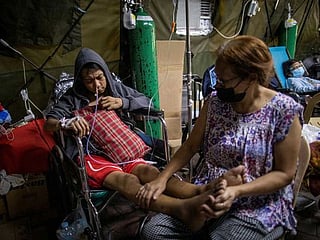US birthrate drops for sixth straight year
Government data reveals early evidence that COVID-19 may be a factor for decline in births

Washington: The birthrate in the US declined for the sixth straight year in 2020, the federal government reported Wednesday, early evidence that the coronavirus pandemic accelerated a trend among American women of delaying pregnancy.
Early in the pandemic, there was speculation that the major changes in the life of American families could lead to a recovery in the birthrate, as couples hunkered down together. In fact, they appeared to have had the opposite effect: Births were down most sharply at the end of the year, when babies conceived at the start of the pandemic would have been born.
Births declined by about 8% in December, compared with the same month the year before, a monthly breakdown of government data showed. December had the largest decline of any month. Over the entire year, births declined by 4%, the data showed. There were 3,605,201 births in the United States last year, the lowest number since 1979. The birthrate - measured as the number of babies per 1,000 women ages 15 to 44 - has fallen by about 19% since its recent peak in 2007.
The declining birthrate is just one piece of America’s shifting demographic picture. Combined with a substantial leveling-off of immigration, and rising deaths, the country’s population over the past decade expanded at the second-slowest rate since the government started counting in the 18th century. The pandemic, which pushed the death rate higher and the birthrate even lower, appears to have deepened that trend.
Kenneth Johnson, a demographer at the University of New Hampshire, has calculated that together with the rise in deaths - up by about 18% from 2019 - the drop in births is contributing to the aging of the American population: A total of 25 states had more deaths than births last year, Johnson said, up from five at the end of 2019.
“The birthrate is the lowest it’s ever been,” he said. “At some point the question is going to be: the women who delayed having babies, are they ever going to have them? If they don’t, that’s a permanent notch in the American births structure.”
Demographers speculate
Births tend to dip after economic crises, as women put off having babies because of uncertainty with jobs and income. The birthrate dropped sharply in the early 1930s after a stock market crash precipitated the Great Depression. But it picked up a few years later, once the economy started to bounce back. However, the recent decline, which began after the Great Recession in 2008, has continued, despite improvements in the economy. This unusual pattern has led demographers to wonder whether something else is going on.
“It’s a big social change in the US,” said Alison Gemmill, a demographer at Johns Hopkins Bloomberg School of Public Health who studies fertility. “A gradual shift of family formation to later ages.”
Births declined across all age groups in 2020, except among women in their late 40s and girls in their early teens, groups that were tiny fractions of total births. The birthrate was down by 8% among teenagers, compared with 2019, and by 6% among women ages 20 to 24. The rate among women in their early 20s is down by 40% since 2007, the government said. Teenagers have had the sharpest decline, down by 63% since 2007, the data showed.
That is a dramatic change from several decades ago, when rates of unintended pregnancy were high, particularly among teenagers, and American women tended to have babies earlier and more frequently than women in much of Europe. Today the average age at first birth is 27, up substantially from 23 in 2010.
“I’m far too young to be responsible for a child,” said Molly Sharp, 25, who works for a women’s health research group at East Tennessee State University in Johnson City. “I’m still learning about myself and being an adult. There’s just no way I could take on that responsibility of having a kid right now.”
The generational change has been profound. Angie Willis, 57, a retired schoolteacher from West Virginia, said she had her first child when she was 20 in 1983. She went to college - driving nearly two hours each way from rural West Virginia to a university in a different part of the state - but said she did not get to experience college life because she had to care for an infant.
“I was a baby,” she said, remembering her years as a young mother.
Her daughters are different. Her youngest, who is 29, went away to college and now has a master’s degree and works in information technology at a large hospital in Charleston, West Virginia. She got married last summer and does not have children.
“I am glad that they have waited and gotten their careers going first,” Willis said of her daughters. “It’s a good change.”
Sign up for the Daily Briefing
Get the latest news and updates straight to your inbox









